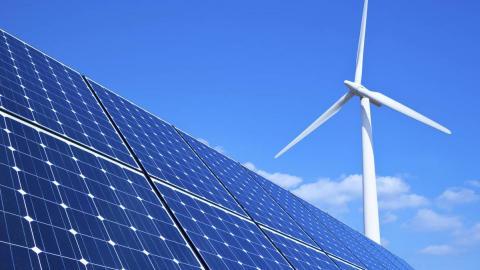Rebounding large scale solar and wind investment, coupled with a stable rooftop PV sector, has seen Australia register almost 50 per cent growth in clean energy investment in 2016.
Bloomberg New Energy Finance (BNEF) figures released this month reveal that total clean energy investment reached $4.29 billion in 2016, up from two weak years, but still below the $5 billion-plus milestone reached between 2010 and 2013.
Large scale wind and solar project financing was the bright spot in 2016, with BNEF noting that the ACT’s reverse auction attracted US$831 million (AU$1.112 billion) in project investment, while US$1.1 billion was invested towards meeting the Large-scale Renewable Target (LRET).
The growth in large scale funding is undoubtedly positive after less than US$10 million (AU$13.4 million) in annual LRET financing registered in 2014 and 2015, in the wake of the Abbott Government’s review of the RET.
However, the BNEF analysis is unequivocal that the level of investment remains well below the US$2.9 billion (AU$3.9 billion) required annually to meet the 20% by 2020 Renewable Energy Target.
“It looks like Australia had an up year for clean energy investment with some big wind and solar financings,” BNEF’s head of solar analysis Jenny Chase told RenewEconomy. “At least US$1.35 billion (AU$1.81 billion) of wind financings [took place] and US$337 million (AU$451 million) of solar.”
Distributed solar stabilizes
Australia’s rooftop PV segment saw US$1.2 billion (AU$1.61 billion) invested in 2016. While this is down from peaks earlier in the decade, the decline has been largely driven by the falling cost of solar modules and inverters and the overall level represents a “steady state” of investment, according to the BNEF analysis.
In fact, one of the key findings of BNEF’s global analysis is that while clean energy investment may be down globally in 2016, falling component and system costs in solar PV has been a major driver. In Australia, for instance, the amount of installed capacity actually rose 1.4 per cent to 725MW.
Investment in distributed solar places Australia sixth globally for small scale PV in 2016, behind Germany (fifth with US$1.4 billion) and Japan (second, US$8.54 billion).
On the large scale front Australia ranks less highly, coming in at 11th place, behind Belgium (eight with US$2.74 billion), Denmark (ninth with US$2.35 billion), and Norway (tenth with US$2.08 billion).
Australia’s overall clean energy investment puts it in ninth place globally, ahead of Norway (eleventh with US$2.73 billion), Canada (thirteenth with US$2.4 billion) and South Africa (30th with US$910 million), but behind Brazil (seventh with US$6.84 billion).













